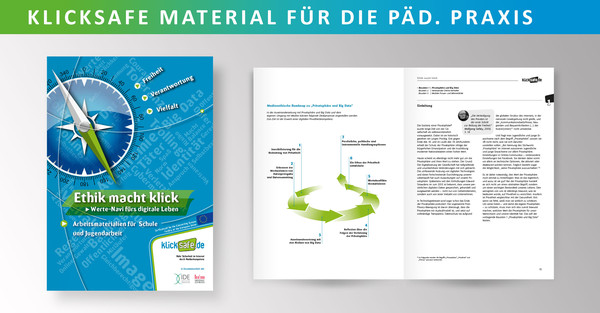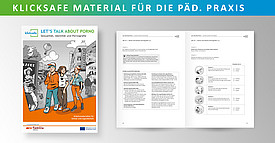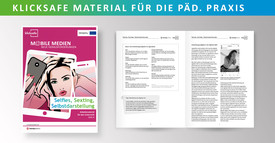Gender stereotypes on the Internet
Mass media are an important source for young people to form their own values. Media figures provide illustrative material for supposedly "typical" male and female characteristics with which they can compare themselves. Young people also exchange popular content via social media such as Instagram or messengers such as WhatsApp: In this way, they also gain significance for their own understanding of roles and values. In particular, realistic depictions can reinforce the impression that the stereotypes portrayed actually correspond to "reality". Stereotypes are generalizing ideas that someone has about a certain group of people.
These female and male stereotypes are portrayed as if certain characteristics and behaviors are dependent on gender. This is done by pretending that these characteristics are natural and correspond to the core essence of each gender. Stereotypes play a crucial role in justifying unequal treatment and reinforce existing prejudices by constantly reflecting them in everyday media.
Module 3 of the teaching material "Ethik macht klick" deals in detail with media images of men and women. The material also includes teaching modules for use in schools or independent youth work. The aim is to empower young people and teach them a value-based attitude. In this way, they will find their own way to find their way in digital society.
Imitation in social networks
Social networks like Instagram are part of young people's everyday lives. They are used for communication and orientation. Above all, however, they are also used for self-portrayal and for comparing self-image and the image of others: How do I see myself? Does this correspond to the image others have of me?
The influence of gender role images extends beyond the individual into the social order. Impact research speaks of "cultivation" in this context. Cultivation can lead to a distorted perception of actual gender relations. For example, when hardly any expert status is attributed to women and they are described in terms of outward appearances. The same applies to the portrayal of men as strong and dominant in contrast to emotional and caring women.
Respect and tolerance as a sign of strength
Young people can be motivated to develop their own attitude through joint reflection: To an ethos of appreciation of one's own gender and of other gender designs. The question of one's own identity is about the success of self-discovery. Necessary for this are:
- Identification models (role models, idols)
- Freedom (experimenting with role perceptions)
- Ability to role distance (questioning norms and roles)
- Identity formation in the peer group
The media have an influence on all four points
They provide (gender) role models, can encourage experimentation with roles, break down role stereotypes, and serve to negotiate role perceptions in the peer group. If young people reflect on their understanding of themselves and their roles by engaging with media content, this provides them with the necessary security and distance to engage with gender issues.
Young people should also be empowered to look critically at unjust gender boundaries and have the courage to speak out against them. To this end, boys and girls should be introduced to the topic of role diversity from different perspectives. While boys should be introduced to role models in the context of family, children and partnership, girls should be guided away from a fixation on partnership issues. Sexist and discriminatory prejudices can relate to the opposite sex, to other conceptions of gender identity or to a person's sexual orientation. That respect and tolerance, not prejudice, is a sign of strength should be made clear. Songs and media content that criticize the devaluation of women or homosexuality can be an important means of challenging subliminal or overt discrimination.




